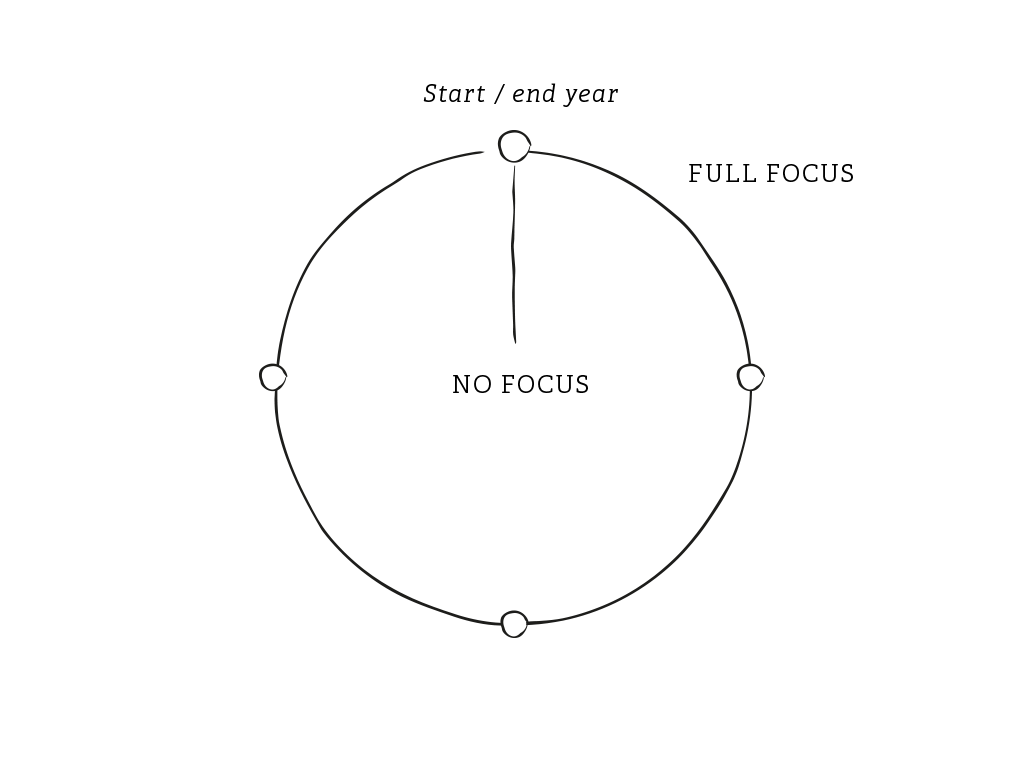I have had many talks with HR managers regarding how often they should get feedback from their employees.
Technically, it is possible to get constant feedback.
As an example, it makes perfect sense to look into how new employees experience start working at the company, while it is still fresh in their memory. Many providers – ourselves included – offer solutions where the local manager can establish a local survey of a specific touchpoint.
Thanks to the digital opportunities, many are considering whether they can benefit from carrying out more frequent engagement surveying. Most managers and employees experience many changes in their roles, tasks, and in the organization.
For this reason, some organizations try out extremely frequent, weekly, or even daily engagement surveys.
The goal is to track all the consequences of these changes on an ongoing basis.
This is doubtlessly a real issue.
However, additional surveying does not always lead to additional improvements.
The critical element is that the team and the employees work with the engagement themselves. When the extra surveys support this, they can strengthen the organization.
Employees do not follow up on surveys
The reality is that many teams have a hard time following up on their current surveys.
- They do not take the dialogue concerning tasks, frameworks, development, and cooperation
- They do not get as far as to talk about forward-looking initiatives
- They do not discuss progress, responsibility, and follow-up
You, as HR manager, either can or should change the behavior.
You must define the framework, but in the end, it is always the employees and the local managers who must implement change.
Too many surveys hurt engagement
Additional surveys just produce more data, which the team has to deal with.
It simply does not make any sense to collect more data, which neither the company, managers, nor teams have the time to do anything about.
There is nothing more frustrating for your employees than to see their feedback ignored by their managers and colleagues. And your managers and employees will get frustrated at not having the time to react to the feedback they receive.
Over time, these frustrations can erode the trust, satisfaction, and motivation in your organization.
Ironically, you risk that the numerous options for feedback hurt your employees’ engagement.
Give your people peace to work, but keep them going
Primarily, your managers and employees must talk about the results and use them to improve. No extra survey can or should replace this.
We can compare this to running a marathon.
You will need to put on your running clothes and hit those country roads. Physical examinations and running tests, in themselves, will not get you over the finish line any quicker. They are great for adjusting your training and your equipment, but you will hardly benefit from repeatedly testing which shoes fit your running style.
You will get the best result by identifying the optimal training in the first place. Then you should use tests along the way to make sure you are making the necessary adjustments and stay on track.
Similarly, the dialogue and initiatives of local teams are the core element of strengthening employee engagement. That your employees are actually working on changing their behavior.
Surveys can provide support and help in generating focus and progress. My experience is that many initiatives and measures take time to implement because this involves everyday human behavior.
Hyper-frequent surveys are, for this reason, not the answer.
On the contrary, you must focus on empowering your employees to work with the results. Follow-up surveys must support the efforts and keep the work on track.
However, too many surveys disrupt the process and shift your employees’ focus away from their primary tasks.
Think beyond the feedback
Successful initiatives require that you think beyond surveying. You have to understand what the survey should lead to.
This will put you in a far better position to decide how and how often to conduct your surveys.
However, even more importantly, it enables you to gain an overview of the resources required by your employees and local managers, and whether the survey will contribute positively.
I have collected some questions you can use as a starting point.
If you consider these before surveying, you are far more likely to create value.
- What is the purpose of the survey?
- How will the survey support the local dialogues and initiatives?
- How will you support the managers’ preparation and team dialogue?
- Which initiatives should the survey lead up to?
- How will you implement that change?
- How will you support the local follow-up?
When you have a clear picture of these things, you can carry out surveys that support dialog, initiatives, and follow-up.
Survey quarterly
For many organizations, up to four yearly engagement surveys will achieve the best balance between follow-up and peace to work. We have clients who are successful with two yearly surveys. The important part is that the questions are adjusted to the processes and challenges of the individual team.
We offer an engagement survey setup where your employees provide feedback four times a year – i.e. once every quarter.

The feedback process follows a cycle consisting of a larger yearly in-depth survey and a lighter survey halfway through the year, which is adjusted to the action plans of the individual teams. After each of these surveys, a small extra survey focuses on the team’s process and its work with the changes. The goal of this feedback is to keep the team on track with their specific work.
This way, you avoid the tiresome repetition of questions and interruption of the work. At the same time, you ensure a dynamic and intelligent follow-up where you can follow the development.
The most significant reward is that you strengthen your employees’ work with the results. This maintains the engagement and focus across the entire year.








